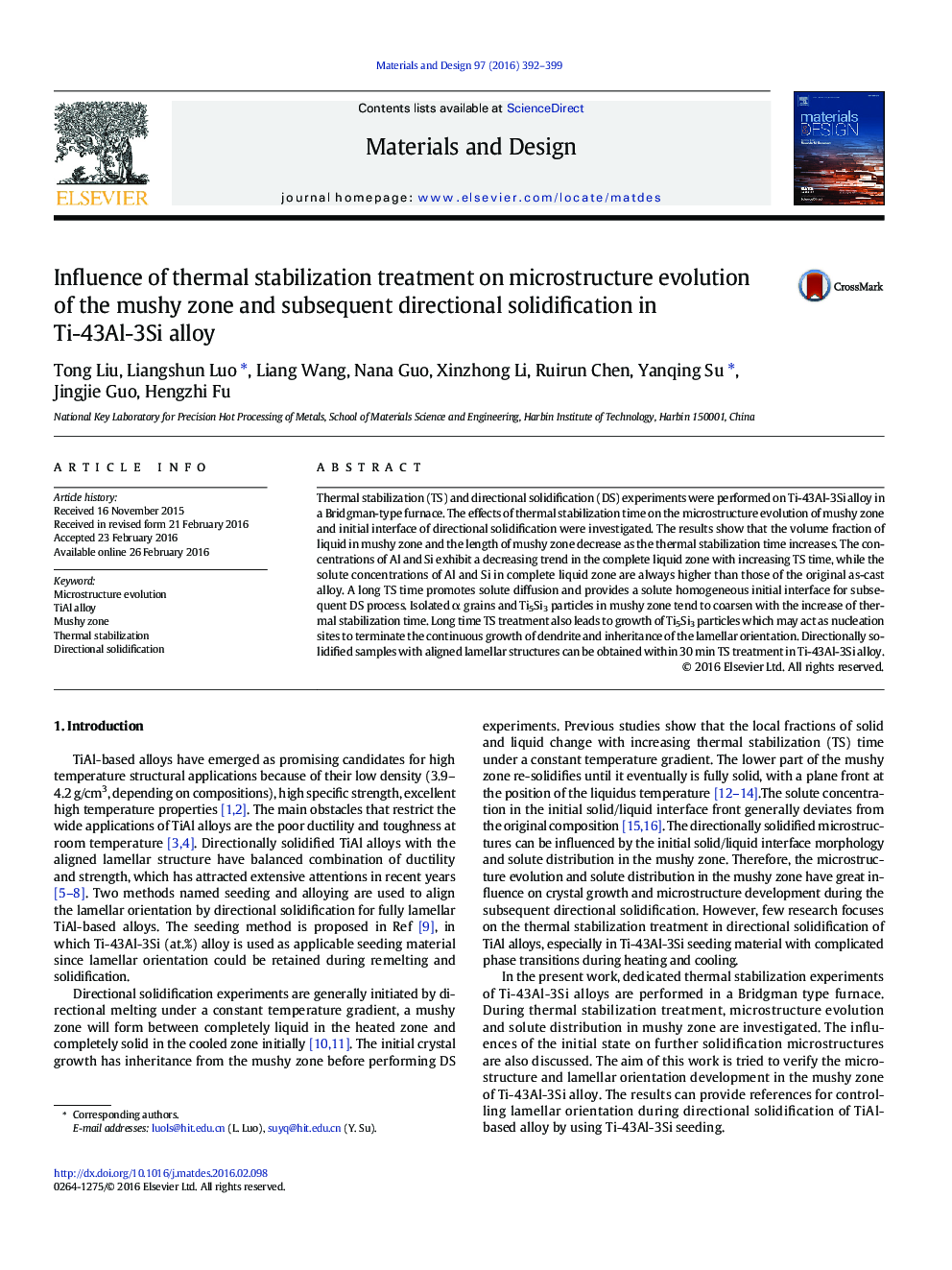| Article ID | Journal | Published Year | Pages | File Type |
|---|---|---|---|---|
| 828090 | Materials & Design | 2016 | 8 Pages |
•Volume fraction of liquid in mushy zone and the length of mushy zone decrease with increasing thermal stabilization time.•The isolated α phase grains and Ti5Si3 particles in mushy zone tend to coarsen with thermal stabilization time increase.•A model for microstructure evolution of mushy zone was proposed in Ti-43Al-3Si alloy.•Directionally solidified samples with inherited structures can be obtained within 30 min thermal stabilization treatment.
Thermal stabilization (TS) and directional solidification (DS) experiments were performed on Ti-43Al-3Si alloy in a Bridgman-type furnace. The effects of thermal stabilization time on the microstructure evolution of mushy zone and initial interface of directional solidification were investigated. The results show that the volume fraction of liquid in mushy zone and the length of mushy zone decrease as the thermal stabilization time increases. The concentrations of Al and Si exhibit a decreasing trend in the complete liquid zone with increasing TS time, while the solute concentrations of Al and Si in complete liquid zone are always higher than those of the original as-cast alloy. A long TS time promotes solute diffusion and provides a solute homogeneous initial interface for subsequent DS process. Isolated α grains and Ti5Si3 particles in mushy zone tend to coarsen with the increase of thermal stabilization time. Long time TS treatment also leads to growth of Ti5Si3 particles which may act as nucleation sites to terminate the continuous growth of dendrite and inheritance of the lamellar orientation. Directionally solidified samples with aligned lamellar structures can be obtained within 30 min TS treatment in Ti-43Al-3Si alloy.
Graphical abstractFigure optionsDownload full-size imageDownload as PowerPoint slide
